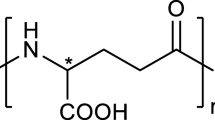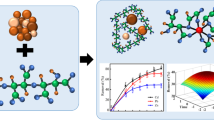Abstract
In this study, a novel horizontal rotating soil washing process and equipment were developed and tested for pilot-scale remediation of soils from a site polluted by chromium ore process residue. Operating parameters, including cylinder rotational velocity, cylinder tilt angle, heating temperature and liquid/soil ratio, were investigated. The Taguchi method was used for the experiment design, and the standard L16 orthogonal array with four parameters and four levels was selected for optimising the operating parameters. Optimal removal efficiency was achieved at cylinder rotational velocity of 2.5 rpm, cylinder tilt angle of 2.6°, heating temperature of 200 °C and liquid/soil ratio of 8. The efficiency of citric acid as an extractant in the novel process was compared with that of water. The analysis of the residual Cr(VI) concentration of the soil shows that citric acid could efficiently remove 22.89 % more Cr(VI) than water in one-stage washing. The residual Cr(VI) concentration in the soil after the three-stage washing is as low as 26.16 mg/kg, which meets the screening levels for soil environmental risk assessment of sites in Beijing City (30 mg/kg). Further study is currently underway to optimise the novel process and equipment for commercial-scale use.




Similar content being viewed by others
References
Jeyasingh J, Philip L (2005) Bioremediation of chromium contaminated soil: optimization of operating parameters under laboratory conditions. J Hazard Mater 118:113–120
Mulligan CN, Yong RN, Gibbs BF (2001) Remediation technologies for metal-contaminated soils and groundwater: an evaluation. Eng Geol 60:193–207
Dermont G, Bergeron M, Mercier G, Richer-Lafleche M (2008) Soil washing for metal removal: a review of physical/chemical technologies and field applications. J Hazard Mater 152:1–31
Kuhlman MI, Greenfield TM (1999) Simplified soil washing processes for a variety of soils. J Hazard Mater 66:31–45
Mann MJ (1999) Full-scale and pilot-scale soil washing. J Hazard Mater 66:119–136
Finzgar N, Lestan D (2006) Advanced oxidation for treatment of aqueous extracts from EDTA extraction of Pb and Zn contaminated soil. J Environ Eng 132:1376–1380
Saidur R, Hossain MS, Islam MR, Fayaz H, Mohammed HA (2011) A review on kiln system modeling. Renew Sustain Energy Rev 15:2487–2500
Marias F, Roustan H, Pichat A (2005) Modeling of a rotary kiln for the pyrolysis of aluminum waste. Chem Eng Sci 60:4609–4622
Ball DF (1964) Loss-on-ignition as an estimate of organic matter and organic carbon in non-calcareous soils. J Soil Sci 15:84–92
USEPA (1996) Method 3060A revision 1, alkaline digestion for hexavalent chromium. htp://www.epa.gov/epaoswer/hazwaste/test/main.htm
USEPA (1992) Method 7196A revision 1, chromium, hexavalent (colorimetric). http://www.epa.gov/epaoswer/hazwaste/test/main.htm
Moon DH, Lee JR, Wazne M, Park JH (2012) Assessment of soil washing for Zn contaminated soils using various washing solutions. J Ind Eng Chem 18:822–825
Peters RW (1999) Chelant extraction of heavy metals from contaminated soils. J Hazard Mater 66:151–210
Zou Z, Qiu RL, Zhang WH, Dong HY, Zhao ZH, Zhang T, Wei MG, Cai XD (2009) The study of operating variables in soil washing with EDTA. Environ Pollut 157:229–236
Kos B, Lestan D (2004) Chelator induced phytoextraction and in situ soil washing of Cu. Environ Pollut 132:333–339
Majid A, Argue S (2001) Remediation of heavy metal contaminated solid wastes using agglomeration techniques. Miner Eng 14:1513–1525
Cheng SF, Huang CY, Tu YT (2011) Remediation of soils contaminated with chromium using citric and hydrochloric acids: the role of chromium fractionation in chromium leaching. Environ Technol 32:879–889
Wuana RA, Okieimen FE, Imborvungu JA (2010) Removal of heavy metals from a contaminated soil using organic chelating acids. Int J Environ Sci Technol 7:485–496
Beijing Municipal Administration of Quality and Technology Supervision (2011) Screening levels for soil environmental risk assessment of sites (DB11/T 811-2011)
Acknowledgments
This work was financially supported by the National Natural Science Foundation of China (Grant No. 51178446).
Author information
Authors and Affiliations
Corresponding author
Rights and permissions
About this article
Cite this article
Lin, X., Gao, M. & Cao, H. Novel pilot-scale washing process and equipment for removing Cr(VI) from contaminated soil. J Mater Cycles Waste Manag 15, 476–481 (2013). https://doi.org/10.1007/s10163-013-0161-6
Received:
Accepted:
Published:
Issue Date:
DOI: https://doi.org/10.1007/s10163-013-0161-6




